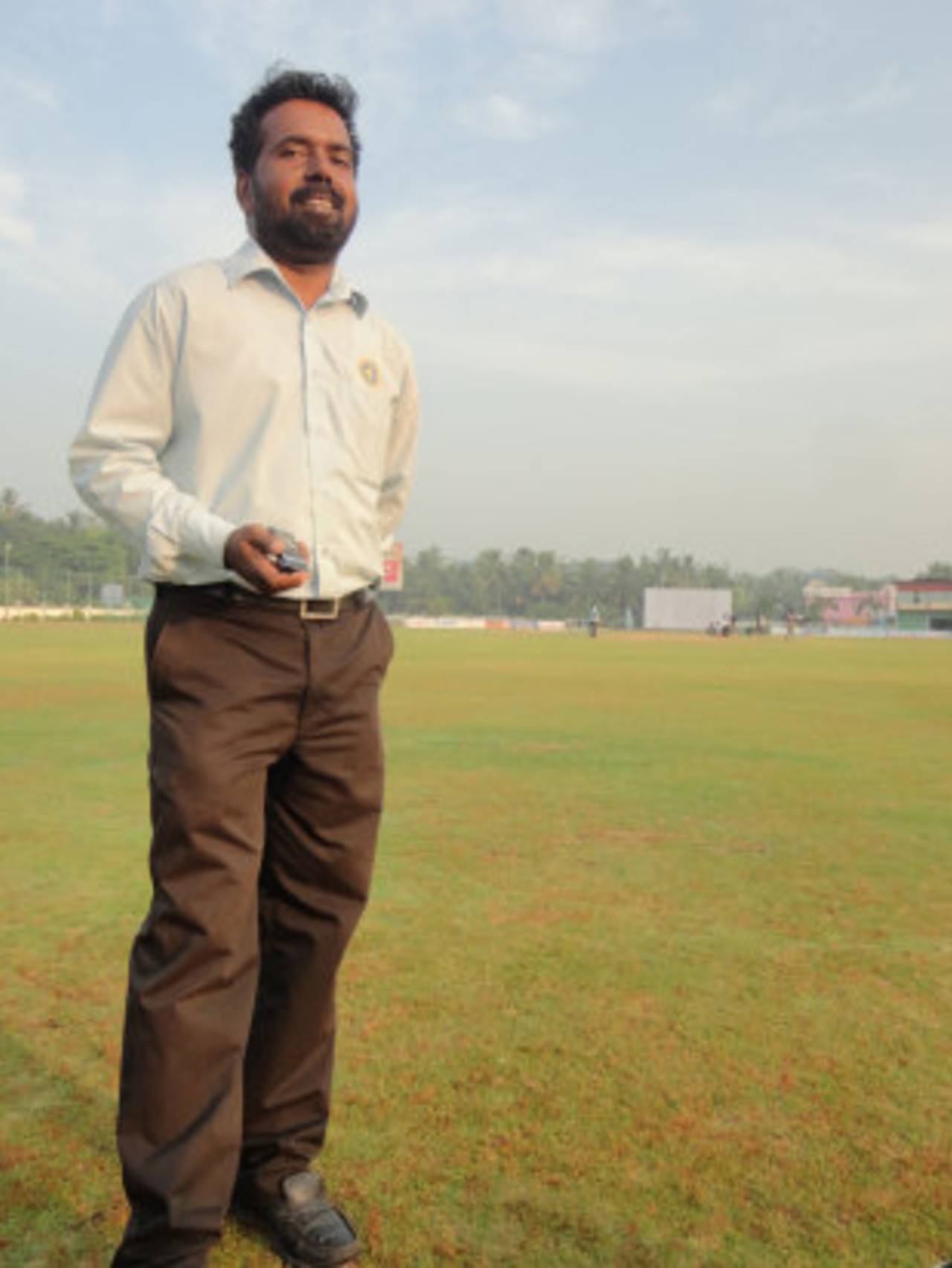This September, Tellicherry experienced heavy rains. Within a week the Conor Vayal ground in this central Kerala town was covered throughout by nut grass, a common weed that flourishes in summer and in the monsoons. The biggest headache for a groundsman is that the root of the nut grass grows deep and is like a bulb; there is no way to deal with it but to manually pluck it out. And as nut grass weed is in the same family as the Bermuda grass, which is the original turf at the ground, the groundsman can't use a chemical because that would damage the whole surface.
Weeks before the start of the domestic season Anoop Kumar Chandy, Conor Vayal's head groundsman, was in a spot. Faced with time constraints, he hired 20 people to pluck out the weed within two weeks. He removed the top surface soil across the damaged sections and applied the required top dressage to restore the surface and get it match-fit.
"It was very challenging," Anoop says. But it's the sort of feat one would expect from Anoop, who topped the BCCI's certification course for groundsmen, held for 25 candidates between July 15 and 31 at the National Cricket Academy in Bangalore. The test, in which he scored 126 out of 150, involved practicals, theory as well as a viva.
In the absence of any experienced international curators in his home state, much of Anoop's knowledge is self-developed - as it is for several of the
new breed of groundsmen across the country. "We often lacked information," Anoop, who has been the head groundsman at the ground from 2006, says. "But we started working based on our knowledge gained from our day-to-day working."
At 36, Anoop is one of the youngest groundsmen in India. A diploma holder in electrical engineering from the Indian Technology Institute in Tellicherry, Anoop turned his attention to cricket in 2000 when he attended a BCCI umpires' seminar in Tellicherry. That four-day event proved to be a catalyst as he qualified as an umpire and travelled through his home state, standing in tournaments conducted by the Kerala Cricket Association (KCA).
While umpiring, Anoop got curious about the "behaviour" of the pitches and wanted to dig deeper. In 2006 he attended another BCCI seminar, this time for curators in Visakhapatnam. Fascinated by the process of pitch-making as well as the intricacies of weather and soil, Anoop decided to take it up as a serious vocation. To learn more, he attended a few more seminars and field workshops conducted by Daljit Singh, the head of BCCI's grounds and pitches committee.
Daljit, the head curator at Mohali for 20-plus years, has been the chairman of the pitches committee for six terms. Worried about the quality of domestic pitches across India, Daljit wanted the groundsmen to gain certification on the lines of the umpires.
The first certification course to help curators learn about the latest methods and technologies in preparing pitches took place in Mohali in 2012. In June this year Anoop was asked to attend the BCCI certification course for groundsmen in Bangalore from mid-July. Others attending included the former Baroda and India batsman
Atul Bedade and experienced groundsmen like Karnataka's Narayana Raju.
In addition to the experiences shared by the members of the BCCI pitch panel, Anoop was fascinated by the lectures of professors from agricultural universities, experts on weed management, soil and sand. "We got tremendous knowledge about what happens beneath," Anoop says. "Normally we would just focus on rolling and watering, but I had a lot of doubts. The course removed the doubts I had as I now know exactly what goes into construction of a pitch."
Daljit was impressed by Anoop's hunger and enthusiasm. "He had made a presentation, most of which was what we usually teach and follow ourselves," Daljit says. "I was happy with the Kerala Cricket Association, the only state to send two curators to the course this year."
Anoop is hungry to work under the guidance of Daljit or PR Viswanathan, the South Zone member of the BCCI's Grounds and Pitches Committee, to gain more exposure. He is now trying to strike a balance between the BCCI's preference for sporting pitches and the Kerala team management and administrators wanting a pitch favouring the home team.
Of the first three matches played in Tellicherry this season, the first match against Andhra Pradesh had a batting-friendly pitch, followed by a sporting wicket against Tripura. Last week, in a must-win match for Kerala, he made a pitch that took turn right from the first over but with a good bounce for most of the match.
"Attending the course taught me a lot to make pitches with different behaviour," Anoop says. "It allowed me to think of a solution for any situation."
Nagraj Gollapudi is an assistant editor at ESPNcricinfo
